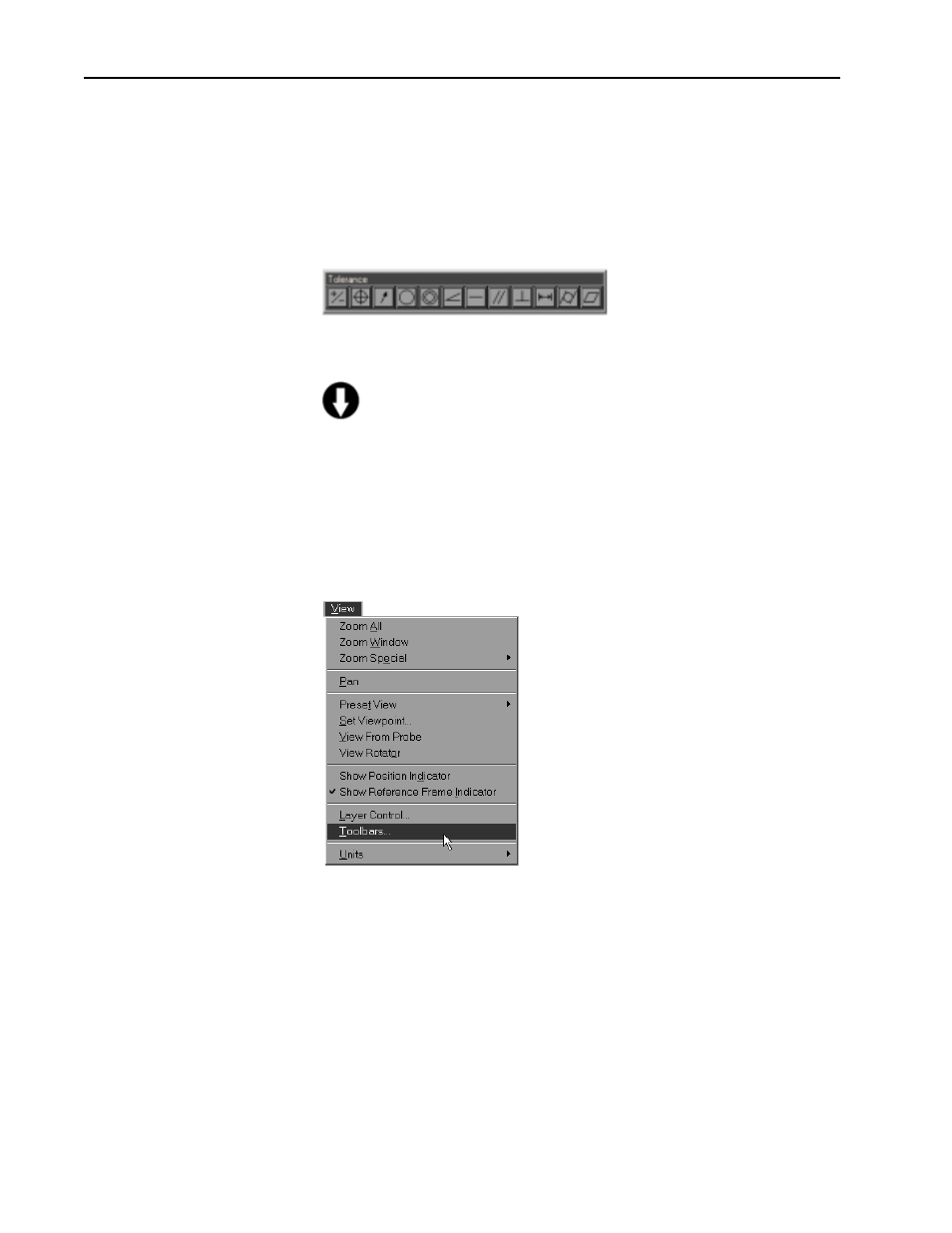Tolerancing, Tolerance toolbar, To view the tolerance toolbar – HEIDENHAIN IK 5293 User Manual
Page 208

194
Chapter 5
Advanced Measuring & Output
Tolerancing
Tolerance is the acceptable amount of deviation from the perfect, or nominal,
values of a part. For example, a bi-directional tolerance states how much (+ or -
) the location of a feature may deviate from its nominal location. Use the
tolerancing function to calculate positions, orientations, and bonuses to keep
tolerancing simple and manageable. It is not even necessary to thoroughly un-
derstand tolerancing to succesfully use it with the QC5000.
Tolerance Toolbar
Use the tolerance toolbar to activate any of the 12 tolerance functions sup-
ported by the QC5000.
NOTE
NOTE
NOTE
NOTE
NOTE
T
TT
T
Tolerance is feature dependent. This means that only certain
olerance is feature dependent. This means that only certain
olerance is feature dependent. This means that only certain
olerance is feature dependent. This means that only certain
olerance is feature dependent. This means that only certain
tolerance functions apply to certain features. F
tolerance functions apply to certain features. F
tolerance functions apply to certain features. F
tolerance functions apply to certain features. F
tolerance functions apply to certain features. For example, a
or example, a
or example, a
or example, a
or example, a
cylindricity tolerance cannot be performed on a point.
cylindricity tolerance cannot be performed on a point.
cylindricity tolerance cannot be performed on a point.
cylindricity tolerance cannot be performed on a point.
cylindricity tolerance cannot be performed on a point.
To view the tolerance toolbar
Step 1
Select toolbars from the view menu.